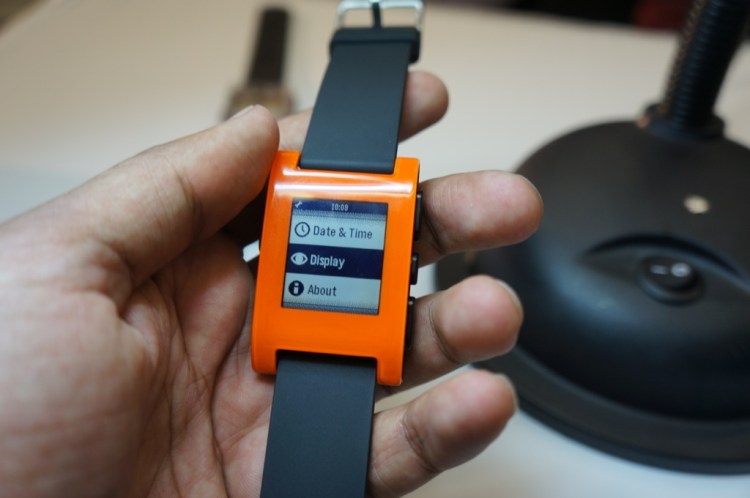Nick is CEO and co-founder of Tile, the tiny Bluetooth Low Energy finder device for keeping track of the small, or big, items in life.
In the past year, we’ve seen the “Internet of Things” era come to life, with connected devices and hardware products popping up everywhere – from Google Glass to August to Coin – and this is just the beginning. We live in a world that is searching for technology to enable easier accessibility and simplicity. Being able to lock up your home, turn off the lights and drive your car, all with the press of a button has become a reality. With new technologies, a plethora of ideas, and a community eager to help fund, 2014 will be the year that hardware products and the connected life take off. Here’s why:
1. Changing the everyday with the Connected Life
In 2013, hardware devices and wearables had an impact on the technology world similar to that of mobile apps when the iPhone launched in 2007. With new knowledge of the industry and advances in microelectronics, 2014 will bring even more powerful technology, due in large part to connectivity to the Internet. Cisco predicts that by 2015, more than 25 billion things will be connected to the Internet, and more than 50 billion in 2020. With a simple Internet connection, these “dumb” objects become smart, creating an ecosystem of intelligent devices personalized to our daily needs and habits.
For example one future scenario could be that you’re flying out the next day to visit your relatives. Your car knows you will need to fill up the gas tank to make it to the airport and there is an accident on your route causing delays. This information is communicated to your alarm clock, prompting it to wake you up earlier, and your mobile device, which sends an alert of the nearest gas stations and what gate you’re flying out of, while simultaneously sending a message to your relatives to notify them of your flight status.
The possibilities are endless, but of course, it’s important to ensure that we aren’t overcomplicating things. To make this smart ecosystem work together, a powerful platform must be born to create order amongst the chaos of the ever-growing connected devices.
2. Power in the platform
Today there are over 10 billion connected things and that number is growing exponentially. Everyday more products are becoming “smart” – coffee makers, light bulbs, locks – even medicine. We are seeing these “smart” devices come on to the market at an incredible rate, but to keep up with this growth we need a platform that makes it very easy and low-cost to get connected to the Internet. Right now there is repeat work done by every company that wants to build a connected device. If this is consolidated into a platform that will work for many applications then a lot of the friction will be reduced and new products will come to market at an even faster rate, similar to what Apple did for the mobile app market with the introduction of the iPhone in 2007.
iOS was so revolutionary for the mobile app industry that most people don’t even remember that mobile apps existed before 2007. What we need to accelerate the rate at which new connected devices come to market is something like that – an iOS for the hardware era. This platform will be built on standards such as Bluetooth Low Energy by commercial entities as a starting point for companies to build off of and create the next great device. With the number of connected devices expected to continue exploding in 2014, this will be the year that connected platforms will arise.
3. Crowdfunding will create a community and boost working capital
Another part of the Internet of Things industry that is benefiting from open-source collaboration is funding. Crowdfunding has placed the future of technological advancement into the hands of the community. People have the opportunity to help fund the “next big thing” and in return, these companies are boosting their working capital as they receive early knowledge of customer demand.
Worldwide crowdfunding volumes reached $2.66 billion in 2012, nearly doubling from $1.47 billion the previous year, according to the Crowdfunding Industry Report by MassSolution, a research and advisory firm. The same research firm predicted a jump to $5.1 billion in 2013 and that amount is said to double in 2014. This year we will see crowdfunding become an increasingly critical part of building amazing devices and communities, and I expect that other industries will begin to take note and integrate crowdfunding into early product development across the board.
What other predictions do you see for the world of hardware and Internet of Things in 2014? Please submit your predictions and thoughts in the comment section below.
 Nick Evans is the CEO and co-founder of Tile, a Bluetooth Low Energy device that will help you to never lose anything again. Nick and his team ran the most successful Selfstarter campaign ever with Tile raising $2.68 million in the first month. Prior to launching Tile in 2013, Nick worked as a hardware and firmware engineer at Pebble, Lockitron, and Livescribe.
Nick Evans is the CEO and co-founder of Tile, a Bluetooth Low Energy device that will help you to never lose anything again. Nick and his team ran the most successful Selfstarter campaign ever with Tile raising $2.68 million in the first month. Prior to launching Tile in 2013, Nick worked as a hardware and firmware engineer at Pebble, Lockitron, and Livescribe.
VentureBeat's mission is to be a digital town square for technical decision-makers to gain knowledge about transformative enterprise technology and transact. Learn More

